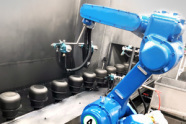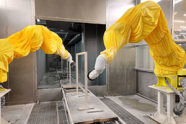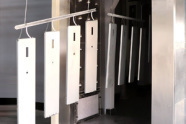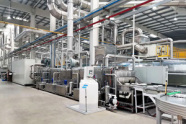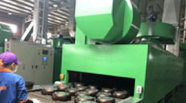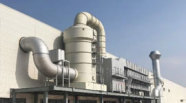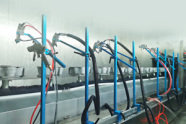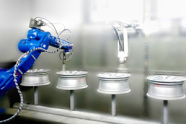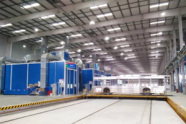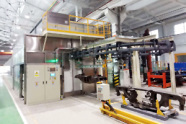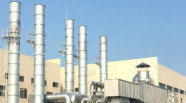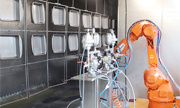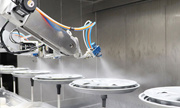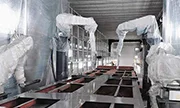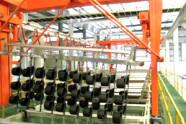Related News
04
2025
-
08
Sustainable Coating Solutions: Water-Based vs. Solvent-Based Paints
Author:
Chuangzhi Coating
In the current global context of advocating sustainable development, the coating industry is also actively seeking a path of green transformation. As a key material in the coating process, the choice of coatings directly affects the coating effect, environmental impact, and the sustainable development capability of enterprises. Among them, water-based paints and solvent-based paints are two common types, each with distinct characteristics in terms of performance, environmental friendliness, and cost. A thorough understanding of the differences between the two is of great practical significance for both coating line equipment manufacturers and enterprises using coating equipment.
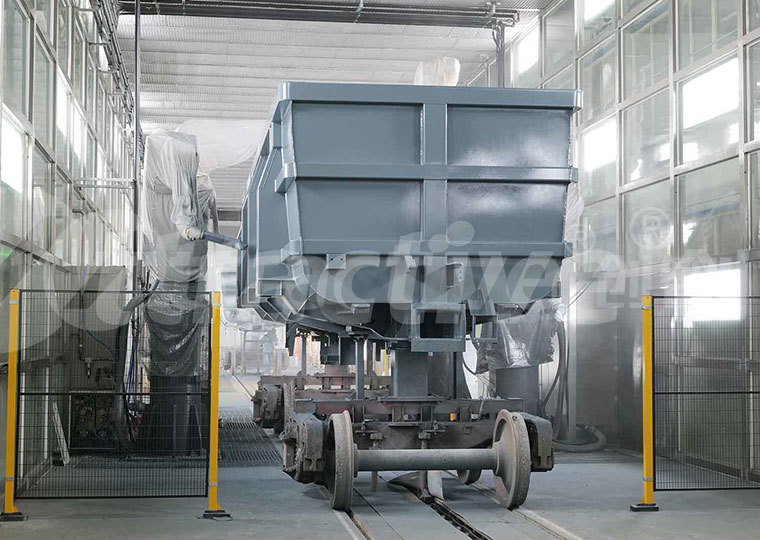
In terms of environmental performance, there is a significant difference between water-based paints and solvent-based paints. Solvent-based paints use organic solvents as the dispersion medium and contain a large amount of Volatile Organic Compounds (VOCs). These VOCs volatilize in large quantities into the air during the coating process, not only causing air pollution and environmental problems such as ozone pollution, but also posing serious hazards to the health of operators. Long-term exposure may lead to respiratory diseases, nervous system damage, etc. Relevant data shows that the VOCs content of solvent-based paints is usually between 300-1000g/L, which is far higher than the requirements of environmental protection standards. In contrast, water-based paints use water as the dispersion medium, with extremely low VOCs content, generally below 100g/L, and even some high-performance water-based paints can control the VOCs content within 50g/L. This significantly reduces the harmful substances volatilized into the air during the application of water-based paints, effectively reducing environmental pollution and harm to the human body, and is more in line with the requirements of current environmental policies and the concept of sustainable development.
In terms of construction performance, the two types of paints have their own advantages and disadvantages. Solvent-based paints are characterized by fast drying speed because organic solvents volatilize quickly, enabling the coating to cure into a film in a short time. This feature gives solvent-based paints certain advantages in scenarios where high construction efficiency is required, such as in large-scale industrial coating production lines, which can shorten the coating cycle and improve production efficiency. However, the construction of solvent-based paints has high requirements for environmental conditions, requiring good ventilation to prevent the accumulation of VOCs, which may cause safety hazards and environmental pollution. At the same time, due to the flammability of organic solvents, strict fire prevention measures must be taken during construction.
Water-based paints have a relatively slow drying speed, mainly because water volatilizes less quickly than organic solvents, and the drying time will be further prolonged especially in high-humidity environments. This affects construction efficiency to a certain extent and increases the construction cycle. However, the construction conditions of water-based paints are relatively lenient, with less stringent requirements on the temperature and humidity of the construction environment compared to solvent-based paints. Moreover, the construction process is less likely to cause fire hazards, resulting in higher safety. In addition, the coating tools for water-based paints are easy to clean, requiring only water, while solvent-based paints need to be cleaned with organic solvents, which not only increases costs but also causes secondary pollution.
Cost factors are also important considerations for enterprises when choosing paints. In terms of raw material costs, water-based paints have relatively higher raw material prices because their production process is more complex and requires special emulsions, additives, and other raw materials. In contrast, solvent-based paints have relatively lower raw material prices and simpler production processes. However, from the perspective of comprehensive costs, the situation is different. Due to the high VOCs content of solvent-based paints, waste gas treatment is required, which means enterprises need to invest a large amount of funds in building waste gas treatment equipment, increasing equipment investment and operating costs. At the same time, as environmental policies impose increasingly strict restrictions on VOCs emissions, enterprises will face high fines if they exceed the emission standards. For water-based paints, due to their low VOCs content, the cost of waste gas treatment is significantly reduced, and in some cases, complex waste gas treatment equipment may not be needed. In the long run, water-based paints have more advantages in terms of comprehensive costs.
In terms of applicable scenarios, solvent-based paints are widely used in fields with high requirements for coating performance due to their good adhesion, corrosion resistance, and weather resistance, such as primers and topcoats in the automobile manufacturing industry, and coating of heavy machinery and equipment. However, with the continuous improvement of environmental protection requirements, the application of solvent-based paints in these fields has been increasingly restricted. Water-based paints have developed rapidly in fields with high environmental protection requirements, such as the architectural decoration industry and furniture manufacturing industry. At the same time, with the continuous advancement of water-based paint technology, their performance is constantly improving, and their application in fields such as automobile coating is gradually expanding.

For coating line equipment manufacturers, it is crucial to understand the characteristics of water-based paints and solvent-based paints. Different types of paints have different requirements for coating equipment. For example, coating equipment for water-based paints needs to have better anti-corrosion performance to prevent water from eroding the equipment; while coating equipment for solvent-based paints needs to have good explosion-proof performance to adapt to the flammable characteristics of organic solvents. Manufacturers can optimize equipment design according to the characteristics of different paints, improve the adaptability and reliability of equipment, and provide enterprises with coating line equipment that better meets their needs.
In summary, water-based paints and solvent-based paints each have their own advantages and disadvantages. Solvent-based paints have certain advantages in terms of performance and construction efficiency, but have disadvantages in environmental protection and comprehensive costs; water-based paints have more advantages in environmental protection and comprehensive costs, and their performance is constantly improving. With the increasingly strict environmental policies and the deepening of the concept of sustainable development, water-based paints are undoubtedly the development trend of the coating industry in the future. However, under the current circumstances, when choosing paints, enterprises should comprehensively consider factors such as environmental protection requirements, construction performance, costs, and applicable scenarios according to their actual needs, select the most suitable type of paint, and match it with corresponding coating line equipment to achieve sustainable coating production.
Previous

